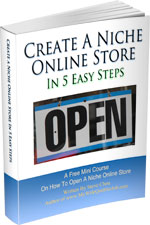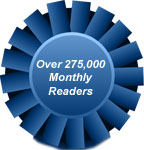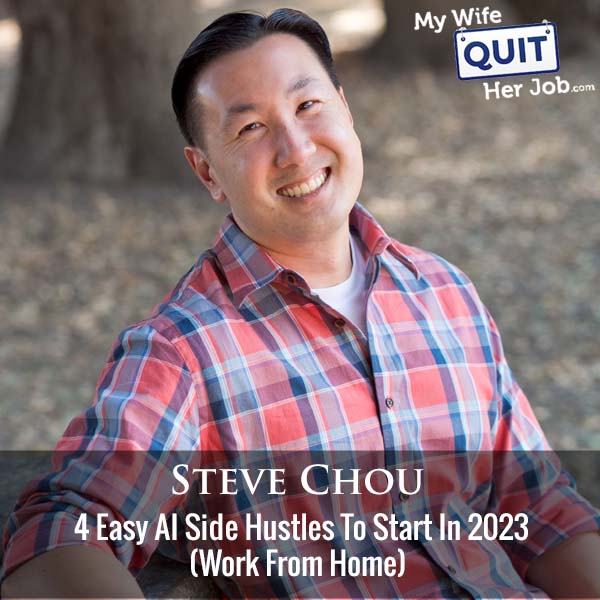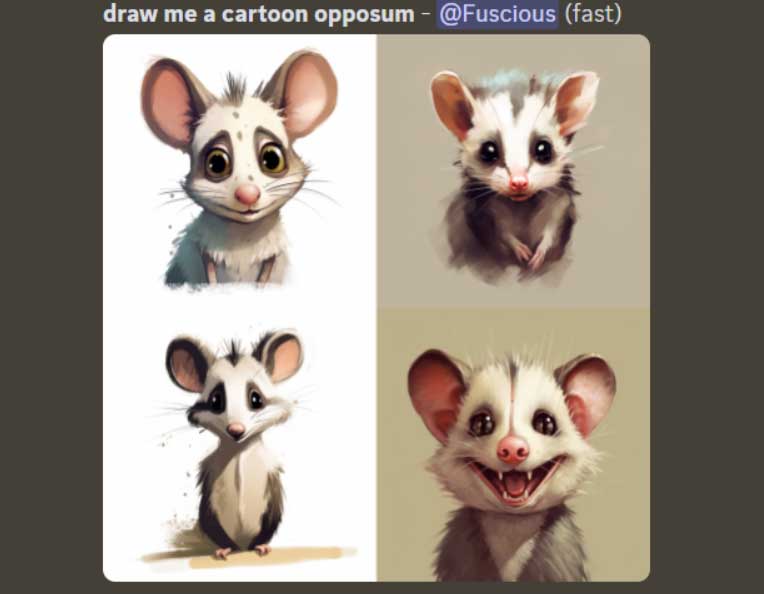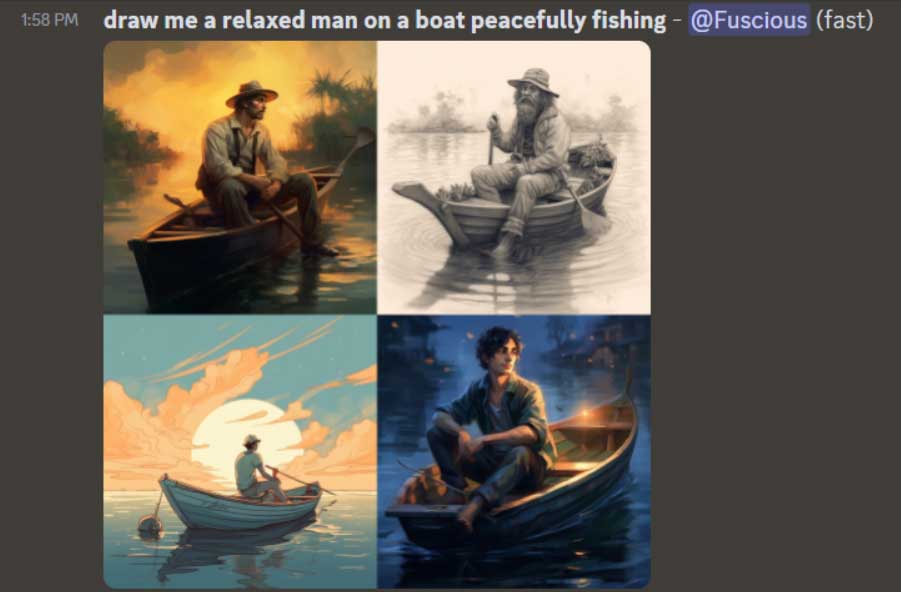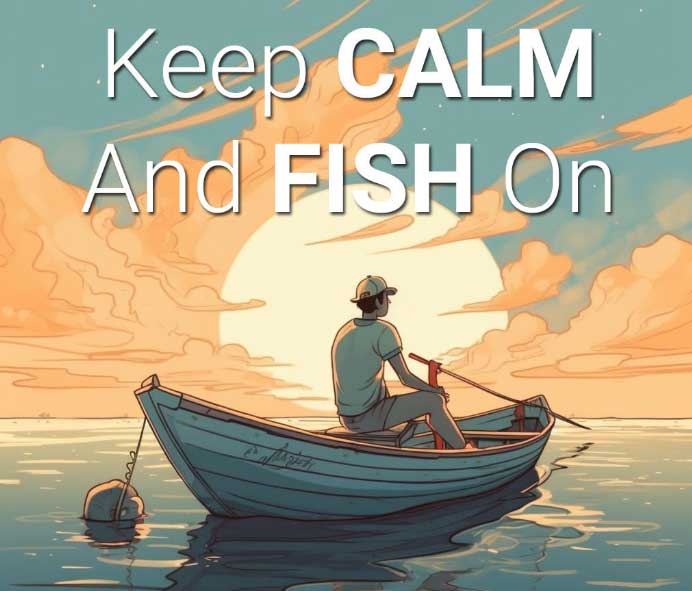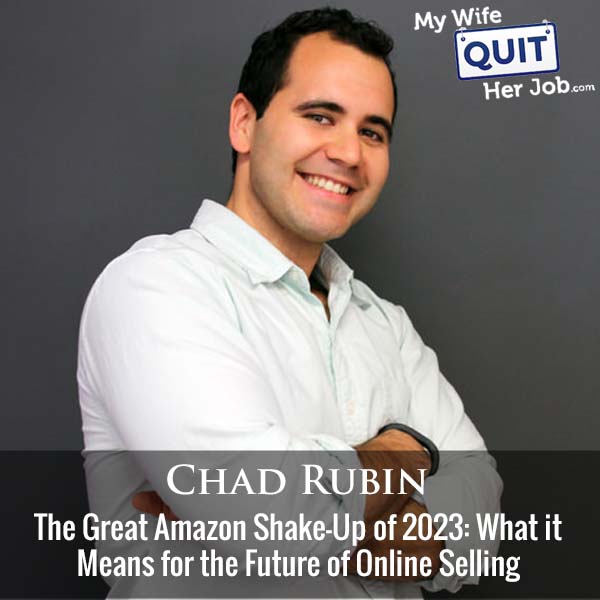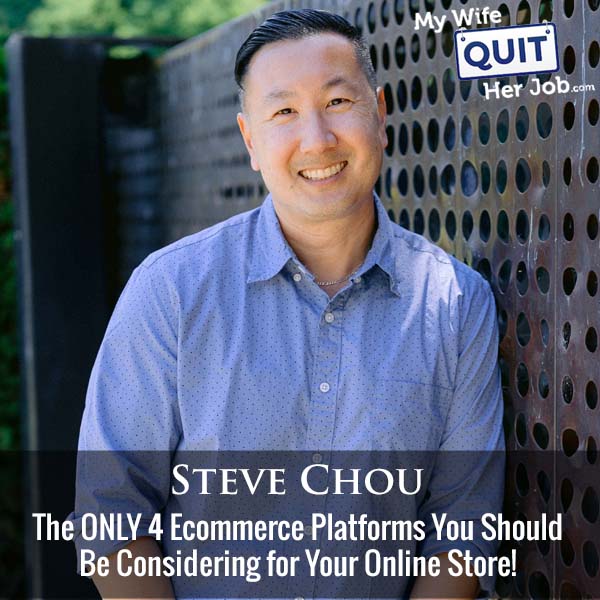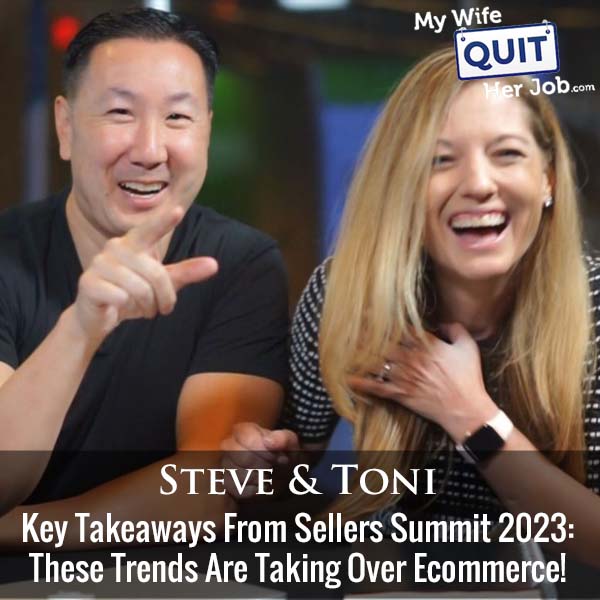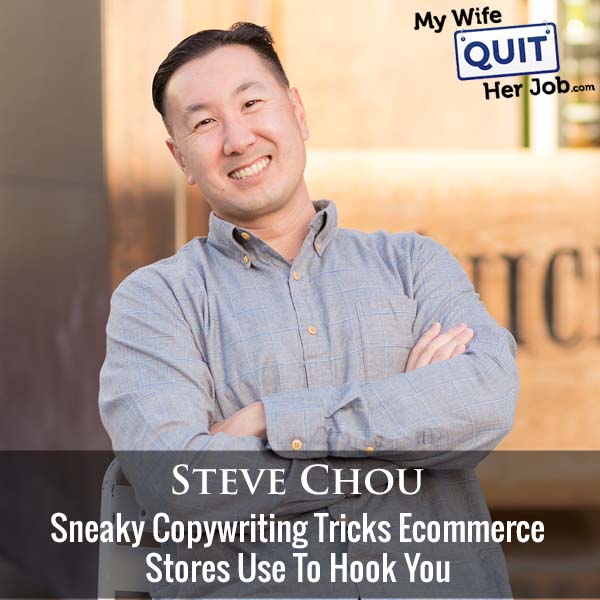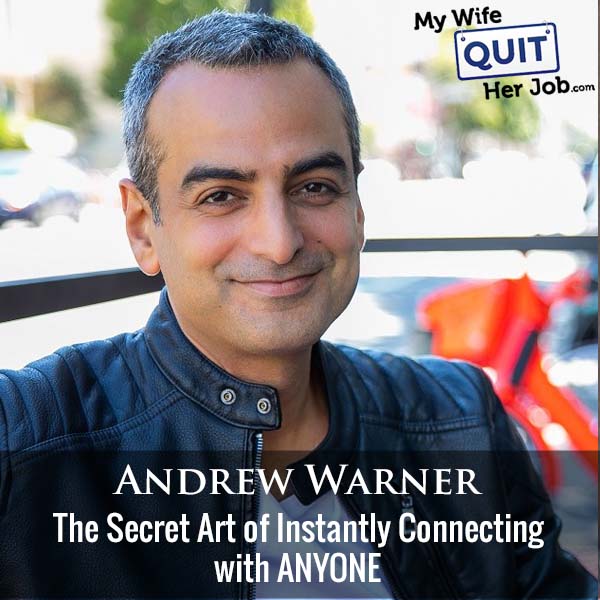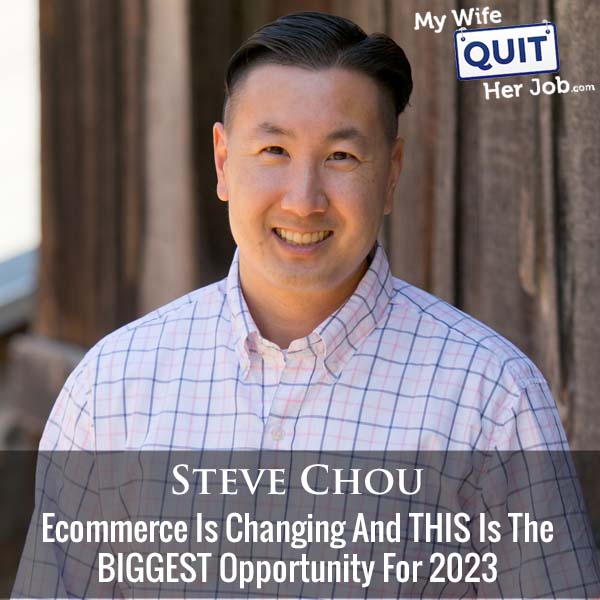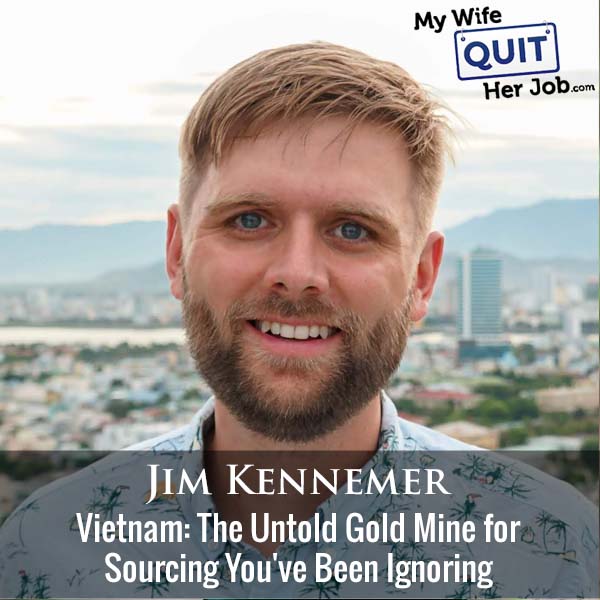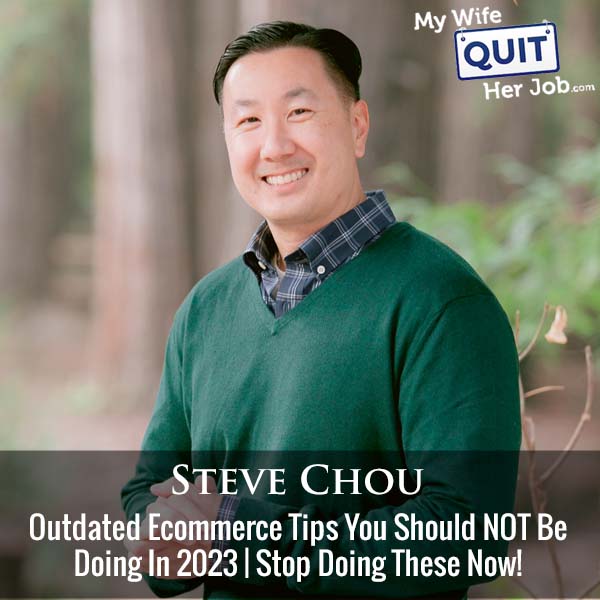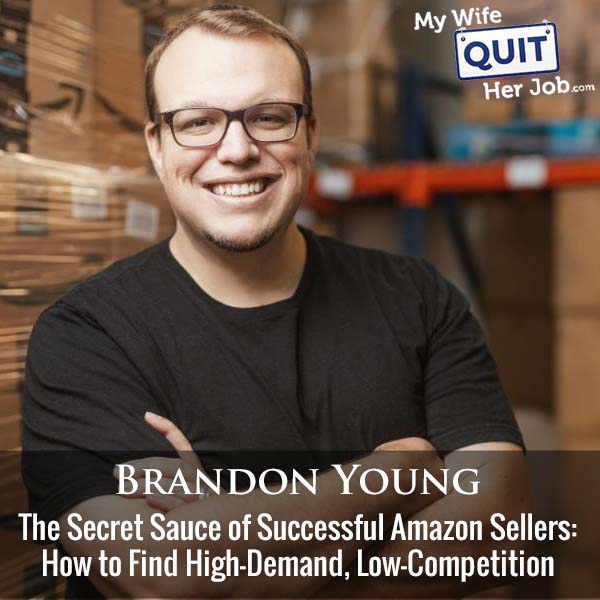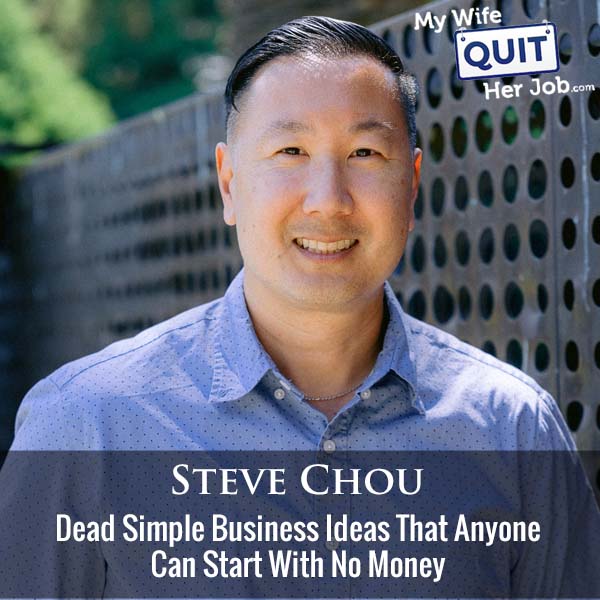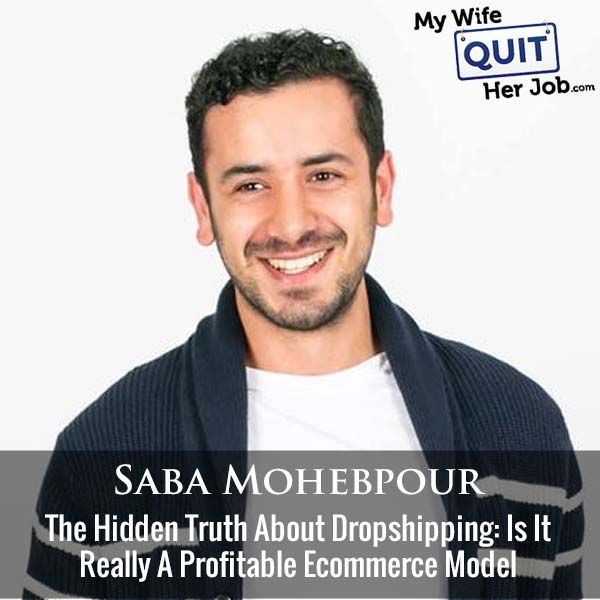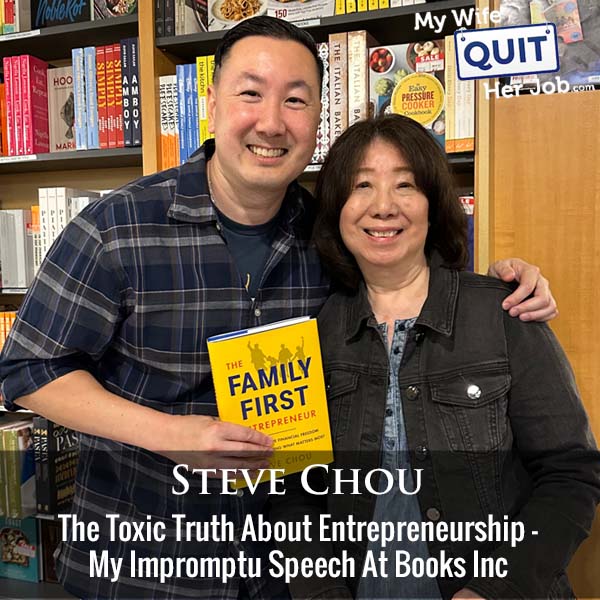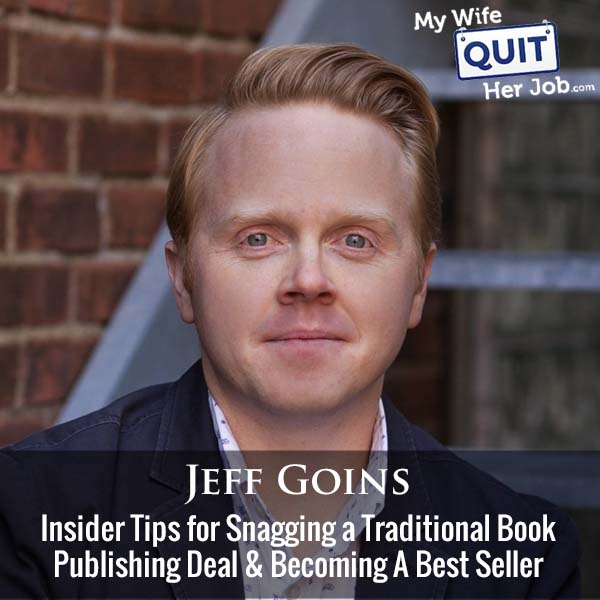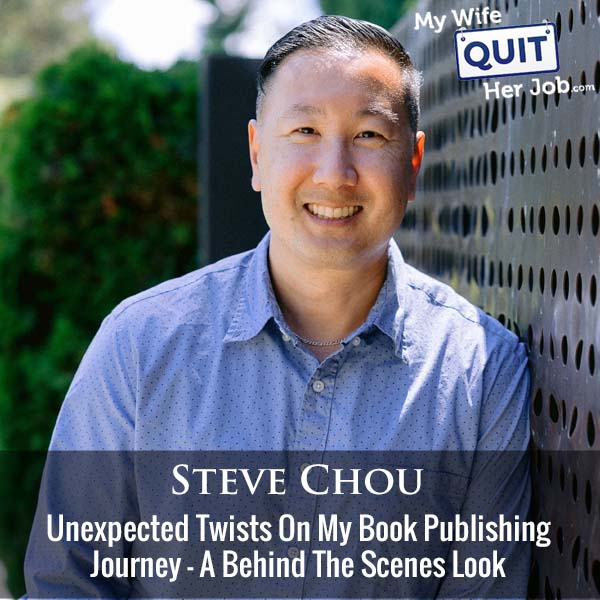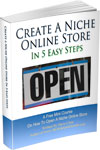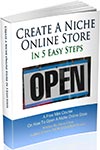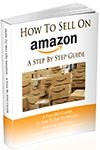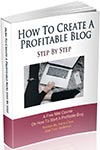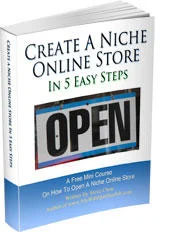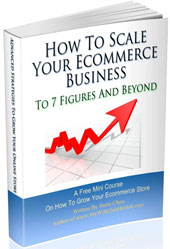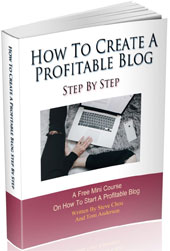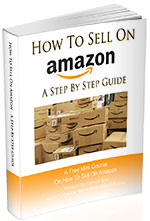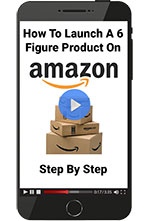I’m thrilled to have Jeff Goins back on the show. Jeff is an accomplished author and the founder of Fresh Complaint, a company that helps authors turn their books into bestsellers. Jeff was a key player in shaping my book, ‘The Family First Entrepreneur’.
In this episode, we’ll cover the nuts and bolts of writing a traditionally published book, and walk you through my own experiences in the process. Hope you enjoy the episode.
00:00
You’re listening to the My Wife Could Her Job podcast, the place where I bring on successful bootstrap business owners and dig deep into what strategies they use to grow their businesses. Now, first off, my book, The Family First Entrepreneur, officially comes out tomorrow. I’m so excited. And as a result, this is the last call to redeem the $690 in free bonuses for getting the book. You’ll receive a three-day workshop on print-on-demand, a two-day workshop on how to make passive income with blogging, YouTube, and podcasting,
00:27
and access to my six week Family First Side Hustle challenge where I will work with you in a private Facebook group on your next side hustle. This is going to begin in June. So grab the book over at thefamilyfirstentrepreneur.com. All right, so the book comes out tomorrow. So I felt that it was only fitting that I bring on Jeff Goins who helped me tremendously with the writing of the book. We’ll go over the ins and outs of writing a traditionally published book and everything I had to go through in the entire process. Enjoy the episode.
00:57
But before we begin, I wanted to thank Zipify apps for sponsoring this episode. Now I’ve been teaching e-commerce for over a decade now, and I’ve been recommending one-click upsell for years. If you want to increase your revenue up to 10 % or more instantly without doing much work, one-click upsell lets you add both pre and post purchase upsells to increase your average order value. This solution is almost guaranteed to boost your sales and the best part is that Zipify only charges you when it actually generates you more revenue.
01:26
Zipify also offers an easy to use page builder so you can build your own landing pages and themes without knowing how to code. For more information, go to zipify.com. That’s Z-I-P-I-F-Y dot com. I also want to thank Link Whisper for sponsoring this episode. Now most of you who follow my blog over at mywifequitterjob.com know that I’ve increased the search engine traffic almost 4x in just the past year. And a large part of that increase was because of Link Whisper. Link Whisper is a WordPress and Shopify plugin
01:56
that allows you to quickly add internal links to your content pages. And by adding internal links to the money pages on your site, you can easily sculpt and focus your link strength to the pages that make you the most money and the ones you want to rank and search. For more information, go to linkwhisper.com. That’s L-I-N-K-W-H-I-S-P-E-R.com. And then finally, I wanted to mention my other podcast that I run with my partner Tony. And unlike this one, where I interview successful entrepreneurs in e-commerce,
02:24
The Profitable Audience Podcast covers all things related to content creation and building an audience. No topic is off the table and we tell like how it is in a raw and entertaining way. So be sure to check out the Profitable Audience Podcast on your favorite podcast app. Now onto the show.
02:45
Welcome to the My Wife, Quit or Job podcast. Today I’m thrilled to have my buddy Jeff Goins back on the show. Last time he was on, it was 2017, episode 166, where I showered him with praise for being a bestselling author. He’s the author of many books, including a national bestseller called The Art of Work. But the reason why I’m bringing him back on the show today is because he was the one who helped me with the Family First Entrepreneur. And as I mentioned in my last solo episode,
03:13
Sometimes you just get lucky with who you meet because I would not have been able to finish this book without him So in this episode, we’re gonna talk about what it takes to write a traditionally published book and How much of a pain the ass I was as a client and with that welcome to show Jeff Hey, Steve, good to be here. Yeah, so I have to ask you this publicly last time I had you on you had a course I think you were pumping out masterpieces yourself because you’re one of the best writers I know
03:41
But then you decided to start fresh complaint and do client work. Is this because real artists do in fact, starve? Uh, that’s layered question. Uh, how did, how did I get into, you how did I get out of product work and get into service work? Um, so, uh, real artists do indeed sometimes starve. did, I did discover that. Um, and I think you didn’t ask this, but I,
04:11
It, I have learned that authors always write the books that they need themselves. And that when you are working on a book, somebody told me this years ago that this, like your life will always test your belief in the subject matter that you’re writing about. For example, if you’re writing a book about family first entrepreneurship, there is probably a temptation to not put your family first during the process of like writing and promoting a book. Yep.
04:40
Uh, when I was, when I wrote real artists don’t starve, uh, I had some financial challenges while I was working through that book and, it is kind of interesting, right? Like I think that, that the work is always kind of a mirror back to you. it’s, it’s, it’s when I write a book, I’m always going, do I really believe this? And I think it just creates a heightened sense of awareness where I’m paying attention to my life. Anyway, that’s not why I started a writing and editing agency.
05:08
I think the long story short is I got bored with working with people that were somewhere far out there. And I sold, you for those who don’t know, was selling online courses for years, had tens of thousands of students over the years, made millions of dollars doing that, been doing that since 2012. And I just kind of got bored. And I think I got a little bit tired of selling a $500 kind of go at your own pace, self-guided video course.
05:37
and wondering if people were succeeding. I would hear from people once in a while, but for every one or two people that said, your course changed my life, there were dozens of people that I never heard from again. And I could look at the stats and see not everybody was finishing the courses and they were getting harder to sell. And I was getting bored of coming up with the next marketing trick to get people to buy.
06:07
The long story short is I had a midlife crisis. went through a divorce. Uh, it was 2020, uh, and courses weren’t selling as well. And, um, I had got, I had started a side gig, uh, writing books for authors. Um, and the first book that I wrote as a ghost writer was, um, for my friend, our friend, Grant Baldwin, who, was the first. did not know that he was the first. And you were actually my second client. Um,
06:36
And there were books that were published in between, but, um, as soon as grant was done, I think he connected us pretty shortly after that. started kind of kicking the idea around and it just took that long to publish a book. Yeah. And so, um, it was harder to sell courses. I wasn’t into it. I wasn’t interested in figuring out the latest innovation to convince people to buy my info product. And I was enjoying, was enjoying clients paying me tens of thousands of dollars to.
07:06
uh, work with them on a book, which I love books. Uh, now there were, there were pains in the ass that I was not expecting about, you know, running a service based business that we can talk about if you want. Um, but it just sounded fun and new and, interesting. And, in, uh, 2020, kind of had two businesses. was doing the ghost writing and editing, uh, stuff, helping authors write and publish books. And then I was also trying to keep the info product business going.
07:34
It was too much to manage and in 2021 I sunsetted all of my courses. did a big flash sale, sold them all, put them in a vault, can’t buy them anymore, and then went all in on the agency work. Wow. I mean, I could have told you that running an agency would have been a pain in the butt. Well, while we were working on this book together, I was like, oh yeah, this is, you know, this is harder than I thought.
08:01
But you don’t know, you don’t really know how hard something is until you do it. But I am enjoying it. I’m enjoying the challenge of learning how to run an agency. And I do miss selling products. I’ll probably get back into that eventually. Because I think they actually pair well, nicely together. I mean, there’s stuff that I have to share with the world that, you know, people aren’t going to pay $50,000 for that can be, you know, that people still need to hear and understand. About half of what I do now is
08:31
is just educate people on the process of what it takes to publish a book. Yeah, I was just gonna say it’d be a shame if you didn’t write another book. But I totally read another book. Yeah. Yeah. Yeah. All right, Jeff, let’s, let’s talk about writing a traditionally published book. In a prior episode, I had my buddy Chandler bolt on to talk about self publishing. When I came to you, I had no intention of self publishing. And
08:58
but I didn’t know what I was getting into. And I’m just kind of curious, your experience with me, is that very similar to some of the other people that you had? Because I came to you, I had like thousand blog posts, I probably had 400 videos, I had like 300 podcasts, and I kind of just dumped all that onto you. Yeah, it is a type of book that we see. I would say there’s a couple of different types of books that we work on.
09:28
One is somebody has an idea and nothing else. And we’ve got to dive into the process of figuring out what that thing is together. I’m working on a book right now where the author has a big platform, know, well known internet personality. And they had a previous book, you know, that was a big book as well. But this person just has an idea.
09:52
You know, and, and they don’t have a lot of content around the idea. They’re, they’re sort of learning what the book is through the writing process, which I’ve written books like that before I get it. Um, that requires lots of this, lots of FaceTime, lots of interviews, lots of kind of teasing out the concepts, writing, rewriting. Um, I’ve got a couple of books that I’m working on right now that are like that. So that’s one type is they have an idea, but not much else. And you have to figure out what it is. You got to pull the book out of them. It’s, it’s in them. The second.
10:21
Um, which is probably the easier kind of book to write. It’s the kind of book that you and I worked on kind of book that grant had where typically, um, you know, the person has like an online course, they’ve got an info product there. They’re no stranger to writing podcasting, creating content. And, and we just have to figure out where is the book in all of this stuff, right? Like what is the through line that makes sense and, how can we build a book out of this content?
10:49
Um, now as you know, I mean, it wasn’t just like, we’re not just recycling blog posts. We still want to like structure the book. There’s a lot of, there’s a lot of content creation that happens, but there’s breadcrumbs out there that we’re sort of piecing together. Um, and I don’t know, maybe there’s a third type that I can’t think of, but those are probably the two main types that someone comes in and they say, Hey, I want to write a traditionally published book. What are you asking them? Like,
11:18
from what I was told from some of the people that I talked to, not everyone can get a book deal, right? So how can you, do you make any guarantees? How can you tell if someone’s going to be able to get a book deal and be traditionally published? never make guarantees. And I typically don’t take on projects that I don’t think will succeed. Meaning I wouldn’t help somebody try to write a book proposal and sell the book to a publisher if I didn’t think it was going to end up in a book deal.
11:47
because it’s a waste of time for both of us. And then I’m getting paid for something that literally didn’t like, there’s nothing. If you, if I helped you write a book proposal, this is how we started working together. Um, you paid me to write that book proposal and, and I did that going, Hey, that’s a good payday. Um, but, uh, if it doesn’t result in a book deal, you’re not happy, know, like, it’s not like you could do anything with a book proposal. And I, and I did that because I was like, you know, hopefully this is going to lead to a book deal.
12:16
that leads to a bigger payday for me and we can work on this thing together and both feel good about writing a book that hopefully goes out into the world and succeeds. So for those who don’t know, if you’re going to get a traditional book deal, the first thing that you need is a book proposal. And before you get that, you want some sort of platform. And I wouldn’t work with somebody who had fewer than say 10,000 people on their email list because a publisher or an agent is just not going to pay attention to it.
12:43
Um, and they didn’t have some sort of like original kind of interesting idea. Um, what was so interesting to me about you is running all of these businesses, being, uh, an achiever, know, like being a driven, ambitious guy and, putting your family first, having your life relatively balanced and, you know, being able to make it all work with being a husband, being a dad and, and being around for your kids’ games and stuff. I thought that was a cool idea.
13:13
Um, it’s something that lots of people talk about. Few people do. It’s one thing to say family first. It’s another thing to do it. So you had the platform, you had an interesting idea. Um, and, and I thought this will probably lead to a book deal and, it felt like a fun thing to, to work on. Do you have like a set of minimum requirements? So you mentioned 10,000 email subs. What else? I know there’s nothing hard and fast, but I literally wouldn’t work on a, I wouldn’t work on a, I wouldn’t.
13:42
I wouldn’t try to help an author sell a novel. wouldn’t work on any fiction. I would work on a memoir, that is typically we’re working on nonfiction, advice, self-help, personal development kind of books. But I wouldn’t work on something that one, I didn’t believe in, or two, just felt boring to me. Like if you said, Jeff, I wanna put together, I just wanna, here’s all my blog posts, build me a book out of this, we’re gonna call it.
14:10
My wife quit her job and which is not a bad name for a book. Um, but like there was, there wasn’t like any umph in it. There wasn’t something that got me excited. Um, that’s my first spiel. I think I shared it with you when we talked. It’s like, Hey, like I can’t work on something that’s boring to me. Cause I’ll just check out and I’ll refer you to somebody, but, but I won’t work on something that, doesn’t personally challenge me in some way. You’ll refer me to one of your enemies. mean? Yeah.
14:38
There’s, mean, this is a pretty generous space. Uh, the space of ghost writers and collaborators, collaborators, editors. And we all know that, um, you can’t take on every client just due to time. And so there’s, there’s a number of writers that I know that do good work that either, um, the author can’t afford me or it’s just not a good fit or I don’t have time and they’re not willing to wait. Um, but no, this was, this was fun. It was exciting. And, um,
15:07
I’d only, when I took you on as a client, cause we started with the book proposal, uh, I only done one book before that. You didn’t tell me that when I signed on. Yeah. Well, there’s certain things that you do say in a sales pitch and certain things that you don’t. Okay. So this proposal actually took, ended up taking a year. It did. Is that typical or it’s not a typical, I mean, I tell people it takes a minimum three to four months.
15:37
Um, and, and then there, the way we do it, there is sort of a progression of steps that has to happen. One, the author and I and our, and our team, um, uh, I work with a small team. It takes us about three months to write the first draft of the proposal. Uh, then we want to get an agent on board, right? We want to, not an Asian, that’s you. We want to get an agent on board to represent it. That might take another two to three months of going back and forth so that the agent is pleased.
16:07
And then they’ve got to shop it and get it in front of various publishers. And that took, I don’t know, a month or two. can’t remember. Yeah. Can we just talk about the agent? So my agent’s Roger. Shout out to Roger. Why do you need an agent? I was wondering that because I was looking at the contract and you know, they get a cut. they do. They get 15 % of everything, advance royalties, et cetera. You don’t need an agent. I mean, that’s the bottom line. You can do a book deal without an agent.
16:36
It is the equivalent to buying a house without a real estate agent. And people do that. It’s not, you can totally do that. Um, and I, I personally wouldn’t do it I don’t know that much about real estate and I don’t know that much about contract law. And, and so, um, an agent is, um, sort of like legal representation. It’s like having a lawyer. They’re not a lawyer, but they typically have a legal team. Um,
17:03
because they’re an agent is often part of an agency or they’ve, they’ve got a really great boiler template contract. Um, they’re looking for loopholes or looking for ways that the publisher might try to screw you and you not be aware of that. Um, and, uh, I like working with agents because many of them, ours included Roger, uh, come from publishers. have a background in publishing. Roger was an editor at Harper Collins, the publisher that you ended up working with and they help make the book better.
17:32
And, um, so why do need an agent? They usually help you get more money. So they pay for themselves. That’s, that’s generally understood in the marketplace that unagented authors make less money. Right. So, you know, if you could go get a hundred thousand book deal, a hundred thousand dollar book deal on your own, um, you know, an agent should be able to make you an extra, you know, 20, 30 grand to sort of pay for himself. So, you know, that’s the thing. One thing too, you.
18:01
Just, I mean, you’re signing a contract and you’re signing an intellectual property contract, especially if you’ve got courses, any sort of content IP, most of these contracts with publishers say that they own any derivative products or projects. Um, so if you had like, let’s say your core, you a course called the family first entrepreneur course, and you wrote a book about that.
18:25
depending on how the contract was worded, the publisher could lay claim to that. had a name, I had a client where they had to rewrite the contract because of that, because they were literally naming their book with their entire content system. Their platform was, was already named after and the way the contract was written, it would have been a bad deal for them. And it’s not to say that the publisher would have laid claim to that, but they could have. it’s legal protection.
18:50
Um, and I would say, you know, it, it does make a good agent makes the content of the book better. And I think as, as we experienced with Roger, he helped us figure out, um, like how do we position this book in such a way where we’re going to get the best book deal with the best publisher that’s going to lead to the best book possible. Yeah. So did you use an agent for all of your books? Um,
19:17
Yeah, I have one self published book and I have four traditionally published books and an agent represented me on all four of those traditional books. So now that you’ve done it four times, you would still go with an agent, even though you kind of know the ropes? Probably. Yeah, because I still don’t, you know, I still don’t read contract law very well. If I didn’t use an agent, I do have what a lot of agents have.
19:47
that most authors don’t have, which is I have a network now. I could call up any number of acquisitions editors at Penguin Random House, Harper Collins, you name it, all the big publishers, and probably get the attention of a publisher. But I’m not a great negotiator, and it’s never, I don’t enjoy negotiating on behalf of myself. But I do have the contacts, and if I didn’t have an agent,
20:17
I would get an IP lawyer to look at the contract. But an agent typically is bringing relationships, they’re bringing the legal, they’re bringing a little bit of editorial, and they’re just making sure that you get the best deal possible. And they also bring the Rolodex, right? Yeah, that’s right. For the most part. All right. So if I remember the process is kind of a blur now since it was
20:45
I want to say a couple of years ago now. Three years ago. I remember just hopping on a bunch of meetings with publishers and then Roger just set a date in the future, some arbitrary date and they all put in their bids and we just kind of selected the winner. That’s right. Yeah. And then it came to writing. I am curious about the writing part. So I know how we did it. You know, I had all this content already and it just kind of needed to be molded into something cohesive and whatnot.
21:16
Is this typically how you work? Yeah. I think ours was fairly asynchronous. Sometimes I do more meetings with an author if it’s necessary. I think we met only a handful of times, recorded those, transcribed them, and
21:37
Uh, started doing what I call building the book, which isn’t quite writing where we’re just kind of taking words and we’re throwing them on the page. If you remember the first couple drafts of the book were ugly and and it was, bad writing. Like a book has to be really bad before it gets really good. Um, I know of no other way to write a book. Um, so is it typical? Uh, again, I think there’s kind of those two types of books. There’s the type of book where.
22:04
The author has the idea in their mind, but they haven’t really created much content around it. In which case we’re getting together doing weekly zooms. I’m asking them questions, uh, transcribing that, turning that into writing, editing that, turning that into like stuff that they get to look at and respond to. Uh, the second type is kind of what we did, which is you have a lot of this content already created and we just kind of have to start putting the pieces together. And then you would go through the manuscript and say,
22:33
I’ve got a story about this. Go check out this podcast. Yeah. I mean, I probably read the thing like 25 times. No joke. You probably read it more than I did. Oh yeah. Easily. I’m sure. And then I had my wife read it. Yeah. Yeah. That was, um, but you did a good job in my estimation. You a good job of not, um, doing that too early, you know, trusting the process and, then when it was time to make it really good and you were signing off on pieces of the book, um,
23:03
Yeah, you were pretty meticulous with it in a good way, I think. So the book, I want to say it took a year, right? a year. That’s right. And then now we’re at the phase where I’m at now, which is marketing. And you had a lot of input during the marketing process. And then you introduced me to a coach, which I’m using. I know when you wrote your best seller, was the art of work, right? Yeah. Real artists don’t starve.
23:32
Wall Street Journal as well. Yep. Oh, it did. Okay. Which one sold more? Did Art of Work? Art of Work sold more copies. Yeah. Okay. It sold almost 100,000 copies. Right. Yeah. So that’s crazy. how did you, how many did sell in week one?
23:49
Uh, think we pre sold 15,500 books and about 8,000 of those books, uh, shipped in week one and another 7,000 or so shipped in week two. were intentionally trying to, uh, game the system a little bit to hit the New York times bestseller list. And we did not achieve that goal. So I’m curious though, I know I’ve been trying to hit like five or 6,000 books and that’s been a
24:19
That’s been a haul. Can you just kind of describe like what your audience size was when you hit those crazy numbers? had 50,000 email subscribers. And then I had social media, but we tracked all this stuff. And I had a tracking link, I create affiliate products in my old shopping cart. And I had a tracking link for every different type of medium, email, I had a bunch of affiliates that were helping me sell the book.
24:48
but I had one for email, I had one for Facebook, I had one for Twitter, I had one for my blog, and then had one for everybody that was mailing on behalf of me. And it was like 90 % of the sales came from email. so I basically had a 50,000 person email list, and then I had a network of online marketers that were willing to help me promote the book, and we did a free plus shipping campaign.
25:18
Oh, wow. Okay, so you were she was intense, man. As I told you, it was it about broke me. The hardcover book on a free plus shipping offer. You’re you’re taking a good chunk out of that, right? I mean, it it was a paperback, but it was 1499. And we we did 699 shipping and handling. And so I was eating about $8 on every book. So it launched in paperback. Oh, yeah. Yeah. Interesting. Does that happen today? It can this was
25:50
This was a book that didn’t really know what it was. was published by a Christian publisher. It was like a career book. And I had written a couple of smaller books before then, but I was trying to leverage my online business connections. So I intentionally wrote a book that my friends would be able to promote. And I didn’t even know. Like when the book…
26:17
was getting ready to come out. was is this coming out of paperback or hardcover? Sometimes authors don’t know the right questions to ask. And sometimes publishers don’t always hold your hand and walk you through the process. Right. Um, which is why I like to do that. Like when I’m working with a client, I think of myself as a Sherpa, like I’m trying to guide you through the process and help you think of the things that I didn’t know to ask until I wrote five of these books. Um, so is it common? Yeah, it happens. This was not a business book. This was like a personal development.
26:47
um, career advice book, um, specifically targeted at younger people, I would say. And so we were trying to keep it, um, cheaper and, more cost effective. maybe that, book was a lot older than real artists don’t starve. You hit the wall street journal for that one. Can I ask how many copies you hit on, like the first week? 2900, 2,000. Yeah. Not a ton. And that was a primary or email list. Cause I remember when we were talking, you were like,
27:15
Yeah, Steve, you want to get on at least 150 podcasts. I’m like, Oh my god, that’s like, I mean, I have 150 podcasts I could go on. Sure. That’s like an hour each. And I was just calculating the time commitment just to do that. Yeah. And it was something that I don’t think I could have done. think that was smart of you. I mean, my my approach to my approach to hitting all the lists in the past has been kind of this shotgun approach. And I think it was this it was very smart the way you thought about this and and
27:44
ran your strategy when I did, when I did art of work, I probably did 250 podcasts. Um, I did everything. mean, it was like desperate. was my, my ego was, was desperate for a, for a hit and, it, and it worked, you know, I hit every bestseller list except for the New York times list. Um, and it sold 50,000 copies in the first year and led to a major book deal. It changed my career as an author for sure, it,
28:14
It was hard. And then, so the next time I did it, I was like, I’m not doing that again. Real Artists Don’t Start was a business hardcover book. I did a number of podcasts, kind of like you, maybe 20, 30, something like that, a bit more strategically chosen. I had a number of folks promote it, and then I promoted it to my email list, which was a bit larger at that point. It might have been 100,000 at that point. I’m curious, so back when you were…
28:42
I guess we’re podcasts even around back during the art of work. probably aren’t as big. Yeah, that book came out in 2015. Okay. Okay. Yeah. So you said you tagged everything. We tracked it all with affiliate links. Yeah, as much as we could. So the 200 podcasts, and again, this is really hard to track on a podcast, but what percentage would you have affiliated with the podcast? There were a number of podcasts that that moved.
29:10
a good chunk of books. was on Jordan Harbinger, who’s a mutual acquaintance, friend of ours. He still was on the Art of Charm. I mean, that book like that single podcast moved a couple hundred books pretty quickly. Wow. That was, that was the exception, not the rule. You know how hard it is to just move, you know, sell a few hundred copies of book. It’s not easy. So the breakdown was about a third of the sales. pre-sold 15,000 books.
29:38
About 5,000 of those books came from my email list, which was good. That’s a 10 % conversion. That’s fantastic. It was awesome. Now keep in mind, it was a free plus shipping offer. was like, I’m going to give you the book for free. And it was a six week mailing campaign to my list. The other two thirds came from affiliates. So, you know, think of that however you want to think of it. But really if you want to sell a bunch of copies of a book and you’re not
30:07
getting other people to promote your book, you’re leaving two thirds of the sales on the table. So if you’re just writing a book to sell to your audience, you’re missing it. And this is across the board. Um, Mark Manson told me about, uh, the subtle art of not giving an F that, um, he could track maybe 50,000 sales, uh, of his book, uh, that had sold, you know, 12 million copies or something worldwide.
30:36
50,000 he could connect to his email list, which was a million people at the time. Wow. So it really is about you’ve got to have a big idea and you’ve got to plan it in a bunch of fields and see what grows. So a third came from my audience. The other two thirds came from people promoting it. Most of which happened through, um, emailing, not podcasts, but you know, I would say there were a couple thousand cause I did so many of them. There were a couple thousand books that we sold via podcasts.
31:06
You mentioned affiliate. Does that imply that the people helping you promote got a cut? They got a cut. So what we did was we did, um, uh, we did free plus shipping and then there was an upsell. So I created a course for, for the book. There was a $200 upsell. And so the idea was all we needed was like, I don’t know, a 7 % conversion rate on the upsell to make back our seven bucks, right? We needed every X amount of person.
31:36
you know, every so many people to every 20th person, whatever it ended up being to spend $200 to make up, you know, everything else. We ended up having a 4 % conversion rate and I had to find a way to make up the difference, but that’s a whole other story. And so if you were an affiliate, I gave you whatever it was, maybe 40 % commission off of the $200 upsell. Interesting. So they buy the book and then you try to sell them a course on
32:06
What was course? was, it was a course on how to, the book was about how to find your calling, how to discover your purpose in life and do the work that you were meant to do. And so I, basically took every chapter from the book and turned it into a lesson. And the big surprise was that did not work well. That people was thinking to myself 4 % isn’t horrible. Wasn’t bad, but I had, I don’t know, $200,000 in expenses. mean, that whole thing went sideways because
32:35
Uh, I sold it internationally and so a thousand people in Australia bought the book and I was having to spend $20 in shipping per book to ship it over to Australia. There was all kinds of crazy stuff. So I had about 200 grand that I needed to make up and I had $70,000 in my bank account. And basically I done the math that if I sold, you know, 10,000 books at, know, if I sell 10,000 books and I put whatever it was, seven, seven bucks into it, that if.
33:05
I didn’t get anybody to convert. I’d lose 70 grand. And I was like, okay, I can like, I’ve got 70 grand in my bank account. It would clear me out, but I’d be fine. And that is, that’s what I thought was the worst case scenario. That was not the worst case scenario. The worst case scenario was I ended up, you know, having an unexpected $50,000 tax bill. had a $150,000 in expenses because we sold more books than we thought. We had all of these other things going on. Um, and so a couple, I learned a couple of things. One, the worst case scenario.
33:34
Could always be worse. think you, you know how that goes. Yeah, I do. Yeah. Two, um, uh, people that buy a book don’t necessarily want the video version of that book. Cause I haven’t read the book yet. Yeah. Yeah. Um, and three, this was the good lesson that I learned even when I went, when I feel like my back is up against a wall, I can always pull a rabbit out of a hat. And basically what happened was I was
34:02
essentially facing bankruptcy, I thought, you know, I was completely over leveraged. had never taken on any debt in the business. was super conservative and I got this platinum Amex card to run all of these purchases, you know, and I had a $60,000 balance on that and this line of credit over here. It was just crazy. And then I, and I, I think I reached out to Derek Halpern and I was like, Hey man, I got to figure this out. And he looked at my sales page and he’s like, that’s a shit show.
34:31
And he goes, find one thing that everybody wants and sell it to him. I don’t care if it has anything to do with your book. And I wrote up this, this, I went back to what I knew, which was most of my audience is writers. They want to build a platform, make money. I’m going to, I’m going to resell an old course, pair it with the book. And I, I had about, uh, two, was, I was upside down. I was about, had about $200,000 in debt because of this book launch. And I made about 250 K in two weeks with this.
34:59
a product launch that I just kind of pulled together after the book. That sounds so stressful. It was so stressful. Yes. There were parts of your book that I could relate to in terms of like, you know, just hustling for some reason to get to some goal and then it almost costing you everything. You know what’s funny about all this is, uh, yeah, so I, I was taught by you and my book launch coach to not sell the book, sell the bonuses.
35:27
I didn’t do the, I didn’t have any upsells. I just gave a bunch of stuff for free for buying the book. I wonder if that, if your strategy would have been better. Well, the cool thing is, you know, like it’s not like you missed an opportunity, you know, so you sell, you know, five, six, 7,000 books in the first couple of weeks. And then a month after that, you know, you’re going to have readers, you’re to have people who have read the book and, are now,
35:57
converted and a really good thing for you to do in the next month or two is to sell them your course, sell them the e-commerce course, which I think is, um, is a perfect fit. What I learned was you don’t have to create a new product around the book. The book is a new product and it should connect everything else that you sell. Right.
36:17
I don’t know that an upsell to a book always makes a ton of sense because they’re like, no, I’m waiting for the book. I want to read the book. And I heard that from a lot of people is well, I’m to read the book first before I take the course. that makes sense. Yep. Well, can we just talk about the effects? So you did sell a ton of books. Yeah. Uh, were they measured? Were the effects measurable? Like what happened? Um,
36:41
What happened? launched your, you said it launched everything, but what, what, happened was, um, every major publisher and every major agent, um, contacted me and they said, I’d love to represent you. I’d love to sign you for another book. talked to Malcolm Gladwell’s first aid, uh, agency that represented him. mean, kinds of crazy stuff happened. Um, and I got to connect with people that I, that I otherwise wouldn’t have gotten to connect with, um, that heard about the book and,
37:11
What was cool about the way that we did this because we ran it all through my shopping cart, not through Amazon. Everybody who pre-ordered the book, I had their emails. had 15,500 new emails. ended up being about 20,000 people when it was all over. That was cool. I I made millions of dollars off of those people over the following years, just them getting into my marketing system, you know, and hearing about products. And we tracked all that stuff for the next 12 months or so.
37:42
Uh, it led to a bigger book deal. Um, the, art of work, um, was a $50,000 book deal and the next book deal I got was $150,000 advance. That was, that was cool. It was a hardcover book. Um, I was now, I am now a bestselling author as a result of that book, uh, which was what I wanted. I wanted a title. Um, and nobody could talk me out of that. You know, I, I, you and I had similar conversations. I was like,
38:12
Yeah. Um, yeah. And, uh, and it was, it was a net positive and I’ll never do it again. That was my next question. Actually. mean, looking back, any regrets or could you have gotten, gotten the same amount for just without killing yourself with three plus shipping? Yeah. Um, any regrets? Um, uh, I would do it differently now.
38:40
I would 80 20 it for sure. I don’t think a free plus shipping deal is a bad idea. You just got to know what you’re getting into. I would have done all the interviews. I would have just done emailing about 70, not quite 80 % of our sales came from like 10 major influencers, 10 major partners. Um, and I had a bunch of JV partners that were like, I did a webinar one time with somebody and like three people showed up, you know,
39:08
And instead of canceling the webinar, I was, you know, super nice and I delivered a pitch to buy a book for, you know, like three people. mean, was just, your conversion rate like 33 %? It was a killer conversion rate. I think it was a 0 % conversion rate. It was very discouraging to talk to three people. You know, they say if you just reach one person, it’ll be worth it. Not really. Although I guess you could have repurposed that content.
39:36
that you gave also, so maybe it wasn’t a net loss. Yeah, there was a bunch of really bad things that happened that I couldn’t have anticipated. Like Barnes and Noble, you can do this to this day. If you have a contact at Barnes and Noble, you can pre-sell a book to your audience, collect all of those orders, and then send a spreadsheet to Barnes and Noble with a credit card on file, and they’ll ship and scan each of those orders individually.
40:05
And I did that and Barnes and Noble didn’t ship the books. They kept them in a warehouse for about three and a half weeks. And so imagine you, Steve Chu, ordered a book from me, say three weeks before the book came out, and then the book comes out and the books are supposed to start shipping. Two, three weeks later, you see everybody’s getting their books. You see people can buy it on Amazon and get it the next day through Amazon Prime, and you still don’t have your book.
40:30
I was getting hundreds, because this was like an order of 3,500 books that Barnes & Noble was to ship. Wow. I was getting hundreds of emails every single day of people saying I had scammed them, I had lied to them, I had cheated them out of their $7. That was intense. So even though was good to get whatever 20,000 new emails through the book promotion and it was a net positive, I’ll probably never do that again where I act as the bookseller.
40:58
Um, and if I do, I’ll, I’ll, be a bit more aware because it turns out Amazon has a pretty hard job and I don’t want it. I don’t want to have to deal with tens of thousands of, mean, you know what it’s like. I don’t want to do it. Tens of thousands of angry customers who are like, where the hell is the thing that I bought yesterday that was supposed to ship? Yeah. That’s why I didn’t want to take orders for this book. I just haven’t submit the receipt, which is actually kind of a lot of work in itself too. Uh, if you want to verify them.
41:28
Uh, I actually, yeah. Yeah. I ended up just having someone verify them because you know, it’s a lot. It’s a lot. Yeah. Let me ask you this question. You said you had a bunch of orders shipped to Australia. Those books actually don’t even count, right? They did count because we bought them here and we shipped them to Australia. Oh, clever. Okay. And we did that with, we did that with, we did that with, um, Canada too. I see some books we were able to buy locally and shoot. mean, dude, like
41:58
It was crazy. Months later, I was like buying books on like, you know, some, I don’t know, some some random, you know, bookstore in Luxembourg, you know, that that carried my book, was shipping it locally to somebody for $23 or something. It was it was intense, man. Let me ask you this. Would you say
42:22
Authors who aren’t like super well known, like the books don’t sell by accident, right? Would you say that all authors who hit the best seller list have some sort of campaign going on? No, I would say most do. Um, and especially business authors. Um, but you know, Stephen King isn’t running a best seller campaign. course. JK Rowling. Uh, but even like somebody like Brené Brown, um, she’s got everybody knows her and she’s got such widespread appeal. She’s probably going to hit New York times list regardless.
42:51
she’s still probably running a strategic campaign. You know, she’s still probably got somebody. I don’t know that. I don’t know. Brene and, I may be wrong about that, but in my experience, uh, almost always there’s some sort of strategy. It is not an accident. Well, uh, last question, since, you, told me that you self published one book, uh, what are just, are your thoughts self versus traditional? So because of the,
43:21
nature of this work where I’m working on a few books a year with clients like I did with you, I get to see a lot more of the publishing industry than I did as an author. And I get to see it a little bit more objectively. I’m a bit less emotional than I would be if it were my book. Um, and I see the good, bad, and ugly, you know, um, all publishing deals are not the same. Um, all publishers, even though they might have big names or all publishing teams on various publishers are not equal. Some are.
43:50
great, some are not great. Um, and, uh, I’ve, I’ve worked on traditionally published books with authors where, where we realized at the end of it probably would have been better or easier just to self publish. Um, and, and sometimes it’s worth it. I would say if you want to hit a bestseller list, it is not necessary that you work with a traditional publisher, but recommended it’s harder to do as a self published author, um, for a number of reasons. Um,
44:19
If you want a higher quality editorial team, um, typically you get that with the traditional publisher, not always, but, typically this is something that you can piece together on your own, but it’ll cost you tens of thousands of dollars to pull that together. Um, and in terms of like, uh, uh, the other thing that I like about working with a traditional publisher is, um, if your book starts to move as your book is Steve, it makes it easier to get international distribution.
44:50
So it is likely that in the next year you will start getting offers through your publisher for translation rights. And it makes sense that, you know, they, they might want to publish, uh, you know, a Chinese version or a Korean version. Um, uh, it makes sense that, that, uh, they might want to do a Spanish version. And the way that works is publishers in those countries typically are buying the sub rights to publish your book from your publisher.
45:20
in their own country and that’s a hard, I’ve done that. have a self published book and I’ve sold into other international markets. It’s a bit harder to do on your own. And so if you want a book that you don’t need to make a ton of money off of, but it, it kind of establishes you as an authority and creates other income streams. Um, it’s still better to traditionally publish, but, I’ll tell you this. mean, I, um, I wanted, uh, since
45:48
2020, 2019, you know, I mentioned midlife crisis. started writing poetry, which is something I used to do as a kid. And I got back into it. And I’d been writing poetry just kind of as a thing that I do as a form of creative expression. And I wanted to publish a book of poems and give it to my wife for Christmas. And the easiest way for me to do that was to just publish it on Amazon. And so I designed the book myself.
46:17
I wrote all the poems, obviously, I designed the book cover, I did it all myself. And I worked with KDP, which is Amazon’s self publishing arm. And I had so much fun doing that. And I was like, this is kind of cool, you know, like, and I did it in two weeks, like I’d spent years writing the poems, but I laid the book out, publish it and had a physical copy in my hand, you know, it’s it’s sitting over here on our mantle. Yeah, in like two weeks. And I’ll probably do that again for some projects because I liked that I liked that
46:47
I don’t need to spend two or three years working on idea and jumping through this hoop and that hoop and whatever to get the product out. Um, so I would say, uh, I’m not quite ambivalent about it. If I had a big idea that I would have wanted to put out in the world, I’d still work with a traditional publisher. But if I had something that I just, knew my audience would sell, it was kind of a niche product or I wanted to make some good money and I just wanted to control all the costs, keep all the profit. would self publish. Yeah.
47:16
I think that’s what I got to ask that question. think that’s pretty much the answer I gave also. Yeah. Cause you know, it’s, like, you know, you’re not doing it for the money. Um, and you’re not doing it cause it’s, you know, easy. Um, but it is an authority play for sure. And if you do it right, it can create these ripple effects. mean, I’ve gotten international speaking opportunities as a result of, you know, writing real artists don’t starve the ING bank.
47:43
had me come speak at a symposium that they had in the Netherlands for artists. It was cool. Cool. Yeah. And that book didn’t sell super well, but it hit a best seller list. It’s been translated into multiple languages. You know, it’s, um, uh, one, two, three, four. This is the art of work. mean, like that’s, that’s a fun thing. That’s hard to pull off as an indie author. Yeah. Cool. Yeah. Jeff.
48:13
I’m not sure after this talk if anyone out there listening is gonna want to do a book but if they are Highly recommend you where can people find you? You can find our team at fresh complaint comm We help authors plan write edit and publish books we can do some of that or all of it and and if we can help, know, just fill out the intake form let us know and my job is to
48:40
Always leave somebody better than I found them. So worst case scenario, if you’ve got a book idea and we’re not a good fit for you, we’ll make some recommendations on what your next steps can be. I mean, just to be frank, I, there’s no way family first entrepreneur would have happened without fresh complaint. Although I did have some fresh complaints during the process, but maybe that’s a subject of another episode as they, they, as they all do now. Thanks. were, you were easy to work with Steve and I really enjoyed the process and
49:09
I felt really challenged working on this book with you. There were moments when I was working through the manuscript and I was like, oh yeah, this area of my life is out of balance. This book, just working on it, because I read it many times too, made me a better dad, husband, and entrepreneur. Thank you for the opportunity to work on it. really did affect me. Hope you enjoyed that episode.
49:36
And once again, this is the last call to redeem over $690 in free bonuses. Order the Family First Entrepreneur Now over at Amazon or go to mywifequitterjob.com slash book for more info. And if you want to publish your own book, head on over to freshcomplaint.com. And once again, I want to thank Zipify Apps. If you want to instantly boost your revenue with pre and post purchase upsells, go check it out over at zipify.com. I also want to thank Link Whisper.
50:04
Now if you want to take search engine optimization seriously with your blog, then you absolutely need an internal link tool like Link Whisper. Go check it out at linkwhisper.com. Now I talk about how I use these tools on my blog, and if you are interested in starting your own e-commerce store, head on over to mywifequarterjob.com and sign up for my free six day mini course. Just type in your email and I’ll send you the course right away. Thanks for listening.
